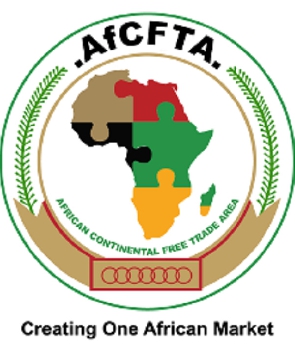Re-echoing the implications of the Africa Continental Free Trade Area (AFCFTA) on Ghana
With the aim of promoting entrepreneurial growth and development on the back of research and policy advocacy, The Africa Centre for Entrepreneurship and Youth Empowerment (ACEYE) has conducted another study on the Africa Continental Free Trade Area (AfCFTA) by exploring some trade liberalization policies and their adverse impact on member states so far.
This study is to inform policy makers in Africa, particularly Ghana of the challenges ahead. In this study, ACEYE presents the mistakes and challenges faced by some countries and suggests lessons Ghana could learn.
Recap of ACEYE’s initial study
On Tuesday, July 30, 2019, ACEYE published an article on “The Implications of the AfCFTA on Ghana.” In this published article, the European Union was discussed as a benchmark for Ghana. It was shown that in the European Union, the economic success is not evenly distributed among the member countries. It was submitted that there are great economic disparities among member countries of the European Union. An implication was drawn that the AfCFTA will not lead to equal or equivalent economic success of the member states. Some countries are likely to be worse off whiles others will be better off under the AFCFTA Arrangement.
It was also revealed that an economic crisis in a member country of AfCFTA will spread across other member countries. This means that besides the “crisis” Ghana is suffering or may suffer, it must be ready to suffer the crisis of other AfCFTA member countries.
Another key factor examined in the publication was that for AfCFTA to function effectively, there must be an established sound political and economic system rather than mere trade liberalization. Based on the finding, it was advocated that the ECO currency must be implemented alongside the AfCFTA and there should be centralized ruling political body for AfCFTA.
As a result of AfCFTA, there is going to be an increase in immigration into Ghana. It is not going to be only human immigrants that will intrude the country, but foreign businesses will enter the country through the “weak spots” in the AfCFTA and compete with the indigenous businesses and start-ups in the country. These are some crucial elements that must be taken into consideration before AfCFTA kicks in.
The government is organising conferences and workshops on AfCFTA. This is good, but we are calling the attention of the State to some basic elements that must be given the necessary consideration. ACEYE wishes to call on the government of Ghana, individual businesses, and the various agencies and stakeholders to take the findings below seriously.
The Situation now
On September 25, 2019, Myjoyonline.com published a news report which was sourced to Bloomberg. The news report was headlined “Nigeria, Benin embroiled in trade dispute two months after signing AfCFTA” While this may be deemed shocking, the truth is that research is a backbone to forecast and build long term orientation. The very same issues addressed by the study conducted by ACEYE only two months ago are the same issues that are brooding conflicts between Nigeria and Benin. It must be noted that Benin is between Ghana and Nigeria. That means that it may involve Ghana and Benin the next time a news on AfCFTA appears on Bloomberg or anywhere. The news reports that Nigeria’s President, Muhammadu Buhari ordered the partial closing of his country’s border y with Benin last month to curb smuggling of rice and other commodities. The restriction, it was reported, is taken by Nigeria to protect her foreign currency reserves by curbing imports. The Nigerian Central Bank has restricted access to dollars for the import of more than 40 items from cement to soap, while the government wants Africa’s most populous nation to become self-sufficient in the production of staples such as rice. Whiles Nigeria is promoting consumption of local rice, Benin imports rice, then passes off the imported rice to Nigeria because there is free trade. Nigeria had fought against the importation of rice since 2014 and it has reduced the importation which stood at about 1.2 million tons of rice to the barest level, but Benin’s importation of rice from Thailand has also increased by over 50%. This was the very issue raised concerning “weak spots” in the AfCFTA causing the inflow of more immigrants and foreign firms into AfCFTA member countries. Clearly, these two countries have different policies and objectives. To achieve harmony, nothing but the establishment of a centralized political and economic system is needed. If this advice is not adhered to, there is going to be more conflicts than is to be foreseen.
There is even the suggestion that the conflict between Nigeria and Benin is affecting Ghana as well. Raw Materials sourced from Ghana to Nigeria are affected and raw materials sourced from Nigeria to Ghana are affected. This has resulted in increased costs of production. Is this not an indication that Ghana is suffering from the crisis of an AfCFTA member country?
Lessons for the Stakeholders in Ghana
Implications of Other Free Trade Area Agreements and the Way Forward
Looking into the ASEAN
‘ASEAN’ is the Association of South East Asia Nations. It was formed in 1967 for a geopolitical reason but it faced intense trade threat from North America Free Trade Agreement (NAFTA) and The European Union (EU) Markets. By 1992, ASEAN implemented Free Trade Area in goods and also liberalized service trade and investment flow among its member countries (Chia, 2011). The ASEAN countries vary somewhat in size, resource endowment, economic development, technology level, political, cultural and social practices which made it difficult to narrow the focus of their Economic Integration. Unlike the European Union that established the EU Parliament, the ASEAN Community created the ASEAN Economic Community (AEC), which was launched in 2015 with the goal to integrate ASEAN Members’ markets into a single market that comprises the free movement of goods, services, investment, capital, and skilled labour. The AEC took long to implement because there was low commitment among the member countries. Currently, the aim of AEC is to form a single market where the ASEAN Economic Community will be one production base with freer flow of raw materials within the member states.
Implications for AFCFTA
Drawing lessons from the ASEAN Case, it implies that the AfCFTA is not going to rise stealthily. There must be some reforms and continuous persistence to sustain it.
First of all, the AfCFTA is set to compete with other Free Trade Agreements and common markets such as NAFTA, AEC and EU in the Global Economy. Chances that AfCFTA will do well on such a battle field is slimmer.
ACEYE recommends that the next 25 to 50 years should be devoted to the building of unified structures and strengthening of internal institutions before planning to compete globally as a common market. For instance, ASEAN traded among itself for several years and liberalized services including labour before establishing the ASEAN Economic Community.
The Current Fate of AfCFTA
Unlike the ASEAN which had wider diversities, the AfCFTA member countries tend to have similar political systems and a higher level of homogeneity which is good. Nevertheless, the member countries have stronger individual economic ties with “external countries” than with member countries. This is going to cause divided attention among the member countries, hence casting doubt on the commitment of the
member countries. It must be anticipated that majority of the member countries will not show commitment because of the stronger ties with foreign countries than internal countries.
Again, The Member countries do not significantly trade among themselves. Each Member Country trades with the “outside” world. It is comparable to a house divided against itself. Or better still, a “food seller complaining of hunger whiles standing by her food.” The AfCFTA claims that it will be able to trade well in the global market, but trade within its member countries is poor. The first step is to promote trade within the member countries and promote investment within member countries. From the declarations made by the Member States regarding the potential benefits of the AfCFTA, ACEYE believes that Member States are overly optimistic and are neglecting the hurdles that need to be taken off the way. Per the studies done, mere trade liberalization will yield no substantial benefit. There must be an economic integration which actually takes years of revolution. Considering the case of Benin and Nigeria, it indicates that the member countries are not thinking strategically about economic integration but are rather operationalizing free trade. This is short term thinking. It was predicted that AfCFTA will promote intra-African trade and to increase trade by 52% by the end of 2022. This is achievable but looking at the commitment of the member countries and the failure to put in some basic mechanisms, it is likely that the AfCFTA will rather have negative consequence on the member countries.
Caribbean Community and Common Market (CARICOM)
The CARICOM was established in 1973 by 15 English-Speaking countries in the Eastern Caribbean to achieve economic integration among the member countries. The Economic Integration was formally implemented through the establishment of the Caribbean Single Market and Economy (CSME) on January 01, 2006. Though the economic policy was established in 2006, it became operational in 2015. The CARICOM faced challenges integrating the Market of its member states. It was also being threatened by the stronger forces of the United States and the European Union. The CSME had to battle to consolidate its member states. The Regional Negotiating Mechanism (RSN) was formed as the economic and political unit for the CSME. According to Prof. Griffith Winston, The RSN had to negotiate with the U.S.A and the EU on trade terms in order for CSME to fit into the global market, where there was some level of compromise.
Again, another case that present lessons to AfCFTA. The CARICOM took 9 years to operationalize their Single Market. Moreover, they had to compromise their aims and visions because of the threats they were facing from NAFTA and EU. They had to sign Trade agreements with these powerful market forces in order to fit into the global market. It means that the first thing AfCFTA has to do is to develop the structures
that will unify the member countries. Which measures are being taken considering the fact that AfCFTA will face trade threats from already existing Free Trade Areas like NAFTA, CSME, AEC, and others?
Critical Lessons for AfCFTA Member States
The AfCFTA member countries should not be swayed over the huge figures mentioned as the benefit that will accrue from the AfCFTA. The figures keep resounding everywhere in the newspaper, at conferences and on various media platforms.
The European Union was established in 1950 and it started experiencing growth in 1969 after the establishment of the European Coal and Steel Community to take unified control over the production of some key products. ASEAN had to form the ASEAN Economic Community to make the ASEAN Market a common production base and this took over 22 years. The Caribbean Community and Common Market (CARCOM) had to establish the Caribbean Single Market and Economy (CSME) and it took over 33 years. Signatories to AfCFTA must start thinking about the reforms that will ensure member states jointly utilize their resources and process them to provide value within the member countries. ACEYE believes that Benin will not buy Cocoa from Ghana because it will not use it for anything. Ghana will also not buy Cassava from Nigeria because it will not use it for anything. From the experiences of the Free Trade Area studied, ACEYE’s argument is that a centralized system should be formed and there should be liberalization of innovation, intellect, capital and human resource such that the member states are able to utilize the endowed resources to develop a common production base.
From the above reflections, ACEYE advocates that AfCFTA signatories should take the pain to sacrifice for unborn generations by doing the right and needful investment that guarantees a better future geared towards Africa’s economic prosperity.
About ACEYE
Africa Centre for Entrepreneurship and Youth Empowerment (ACEYE) is an entrepreneurial and policy think tank promoting youth entrepreneurship through research, professional analysis, training, advocacy and advisory services.
Business News of Monday, 7 October 2019
Source: ACEYE

















